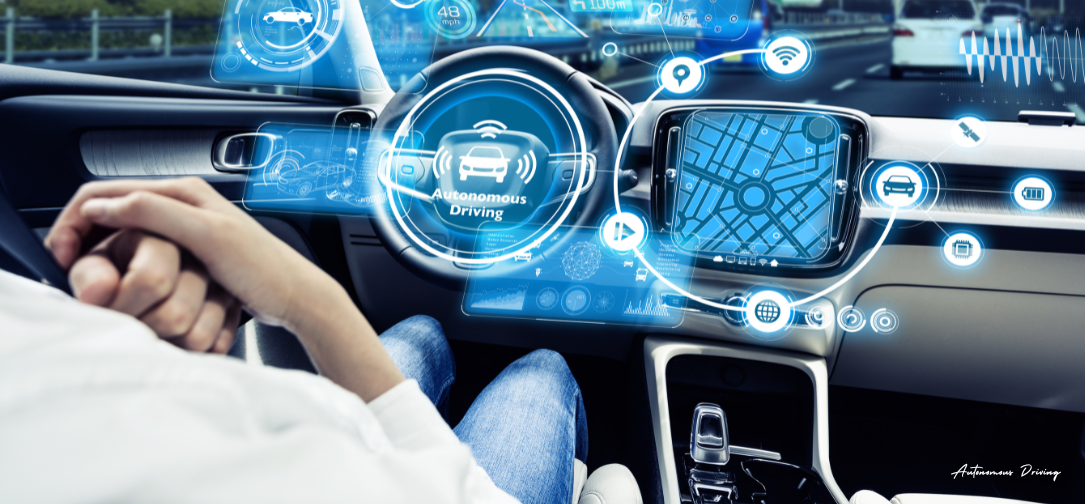Automotive
Autonomous Driving: Progress and Challenges in the Development of Self-Driving Cars

Autonomous driving technology, once the stuff of science fiction, has rapidly progressed over the past decade. Self-driving cars, enabled by advances in artificial intelligence (AI), sensors, and data processing, promise to revolutionize transportation. However, the road to full autonomy remains fraught with technical, regulatory, and ethical challenges. This report provides a detailed analysis of the current state of autonomous driving, exploring the progress made, the hurdles that remain, and the future outlook for self-driving vehicles.
Progress in Autonomous Driving
The development of autonomous vehicles (AVs) has seen significant strides, particularly in the last few years. The industry categorizes autonomy into five levels, from Level 1 (driver assistance) to Level 5 (full autonomy). Currently, most commercial vehicles are at Level 2 or Level 3, where the car can manage driving tasks under specific conditions but still requires human intervention.
Key Technological Advances:
Sensors and Perception Systems: Modern AVs are equipped with a suite of sensors, including LiDAR, radar, and cameras, which work together to perceive the environment. These sensors provide the raw data that AI systems process to make driving decisions. The fusion of data from multiple sensors enhances the vehicle’s ability to detect and respond to obstacles, pedestrians, and other vehicles in real-time.
Artificial Intelligence and Machine Learning: AI algorithms, particularly those based on deep learning, have become more sophisticated, enabling AVs to recognize complex patterns in the driving environment. End-to-end learning models, which process raw sensory input to generate driving commands, have shown promise in improving the decision-making capabilities of self-driving cars.
Connectivity and V2X Communication: Vehicle-to-everything (V2X) communication technologies allow AVs to exchange information with other vehicles, infrastructure, and even pedestrians. This connectivity enhances the safety and efficiency of autonomous driving by enabling cars to anticipate and respond to potential hazards before they become visible.
Deployment and Commercialization: Several companies, including Tesla, Waymo, and Cruise, have launched pilot programs for AVs in select cities worldwide. These programs often involve Level 4 autonomy, where the vehicle can handle most driving tasks independently within specific geofenced areas. Robo-taxis, autonomous delivery services, and shuttle buses are among the first applications of this technology.
Consumer and Market Trends: Despite the technological advancements, consumer adoption of autonomous vehicles has been slower than anticipated. Surveys show that while there is significant interest in the technology, concerns about safety and reliability persist. According to a recent McKinsey report, the percentage of consumers willing to switch to a fully autonomous vehicle dropped by nearly ten percentage points from 2020 to 2021. Trust in the safety of AVs has also decreased, with many consumers preferring to wait until the technology is more mature.
Challenges Facing Autonomous Driving
Despite the progress, several challenges continue to impede the widespread adoption of self-driving cars. These challenges span technical, regulatory, and ethical domains, each posing significant obstacles to the realization of fully autonomous vehicles.
Technical Challenges:
Complex Urban Environments: One of the most significant hurdles is enabling AVs to navigate complex urban environments, which are characterized by unpredictable variables such as pedestrians, cyclists, and erratic human drivers. Current AI models struggle to generalize from the controlled environments they are trained in to the chaotic nature of real-world city streets.
Robustness and Reliability: Autonomous systems must be reliable under all conditions, including adverse weather, low visibility, and varying road surfaces. Ensuring the robustness of AVs in such scenarios is a major challenge, as even minor sensor failures or misinterpretations by AI could lead to catastrophic outcomes.
Ethical Dilemmas: AVs are frequently confronted with ethical dilemmas, such as choosing between the lesser of two evils in potential crash scenarios. These situations require the development of ethical frameworks that are both technically implementable and socially acceptable. The lack of consensus on these issues remains a significant barrier to deployment.
Data Privacy and Security: Autonomous vehicles generate and process vast amounts of data, raising concerns about privacy and cybersecurity. Protecting AVs from hacking and ensuring that data is securely managed are critical to gaining public trust.
Regulatory and Legal Challenges:
Lack of Global Standards: While some progress has been made in establishing regulations for autonomous driving, there is still no global standard. Countries like the United States, Germany, and Japan have introduced specific legislation, but these are often fragmented and inconsistent, creating uncertainty for manufacturers and consumers.
Liability and Insurance: Determining liability in the event of an accident involving an AV is a complex issue. The question of whether the manufacturer, software developer, or vehicle owner should be held responsible is still unresolved in many jurisdictions, complicating the deployment of AVs.
Regulatory Approval Processes: The process for obtaining regulatory approval for autonomous vehicles is often slow and cumbersome. The need for extensive testing and validation to ensure safety adds to the time and cost of bringing AVs to market.
Public Perception and Ethical Considerations: Public perception remains one of the most significant barriers to the adoption of autonomous vehicles. While the potential benefits of AVs, such as reduced traffic accidents and increased mobility for the elderly and disabled, are well-documented, widespread skepticism persists. Concerns about job losses in driving professions, the potential for increased surveillance, and the ethical implications of machine decision-making contribute to this skepticism.
Future Outlook
Despite these challenges, the future of autonomous driving remains promising. The industry is expected to see significant growth in the coming years, driven by technological advancements, regulatory support, and changing consumer attitudes.
Predicted Growth: Market analysts predict that the global market for autonomous vehicles will continue to grow, with the potential to reach a value of over $600 billion by 2030. This growth will be fueled by increased investment in AV technology, the expansion of pilot programs, and the gradual acceptance of autonomous vehicles by the public.
Technological Innovations: Ongoing research in AI, sensor technology, and V2X communication will likely lead to significant improvements in the safety and reliability of AVs. Innovations such as quantum computing and advanced neural networks could further accelerate the development of fully autonomous vehicles, bringing Level 5 autonomy within reach.
Regulatory Developments: The establishment of global standards and streamlined regulatory processes will be crucial to the widespread adoption of autonomous vehicles. Efforts by international bodies such as the United Nations Economic Commission for Europe (UNECE) to create harmonized regulations are a step in the right direction. As these standards are implemented, they will provide a clearer path for manufacturers and encourage investment in the sector.
Societal Impact: The adoption of autonomous vehicles is expected to have far-reaching societal impacts. These include reduced traffic congestion, lower accident rates, and increased access to transportation for underserved populations. However, it will also require addressing challenges related to job displacement, data privacy, and the ethical implications of AI-driven decision-making.
Conclusion
The development of autonomous vehicles represents one of the most significant technological advancements of the 21st century. While substantial progress has been made, the path to full autonomy is still fraught with challenges. Overcoming these hurdles will require continued innovation, regulatory cooperation, and public engagement. As the technology matures, autonomous vehicles have the potential to transform the way we live, work, and travel, ushering in a new era of mobility.
-

 Press Release5 days ago
Press Release5 days agoClinical Trials Market Set for Robust Growth, Driven by Drug Development Surge and Digital Innovation
-

 Press Release6 days ago
Press Release6 days agoGreen Bio Chemicals Market Poised for Sustainable Growth amidst Global Shift to Eco-Friendly Alternatives by 2035
-

 Press Release6 days ago
Press Release6 days agoIndustrial Boiler Market Expected to Surpass USD 24.4 Billion by 2035 Amid Growing Demand for Energy Efficiency and Industrialization
-

 Business7 days ago
Business7 days agoHow Managed IT Solutions Help Small Teams Compete at Enterprise Scale
-

 Press Release6 days ago
Press Release6 days agoFill-Finish Pharmaceutical Contract Manufacturing Market Expected to Flourish Amid Biopharmaceutical Boom and Global Outsourcing Trend by 2035
-

 Press Release6 days ago
Press Release6 days agoPreventive Vaccines Market to Witness Strong Growth by 2035
-

 Press Release6 days ago
Press Release6 days agoPet Food Nutraceutical Market Set for Robust Expansion Amid Rising Demand for Pet Wellness by 2035
-

 Press Release5 days ago
Press Release5 days agoWaterproof Structural Adhesives Market: A Comprehensive Study Towards USD 10.3 Billion in 2035












